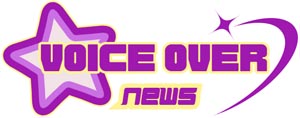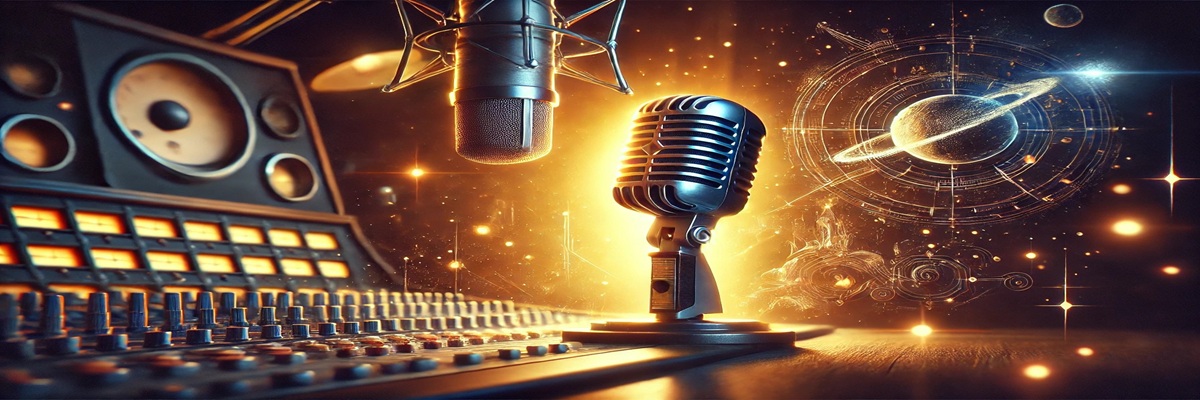George Lowe, widely recognized for his vocal portrayal of Space Ghost in various animated formats, has died at the age of 65. News of his passing was confirmed by official sources in early March, sparking an outpouring of memories and tributes from colleagues, fans, and those in the broader entertainment community who appreciated his warm humor and distinctive comedic style. Over several decades, Lowe built a reputation both as a comedic performer in stand-up circuits and as a notable figure in the animation and game voiceover industries. Perhaps best remembered for bringing the cult-favorite talk show parody Space Ghost Coast to Coast to life, he also contributed lines to numerous other projects, including the Dead Space series.
A Comedic Legacy Forged in Cartoon Networks
George Lowe’s interest in performance reportedly began during childhood, when he would mimic the voices of television characters or practice comedic bits for friends. By early adulthood, he had dabbled in local radio gigs, learning how to project presence with a microphone while infusing his lines with humor. This foundation served him well once he discovered the world of animation voice acting. Television networks in the early 1990s were seeking creative ways to fill late-night blocks with unconventional content. One such plan gave birth to a comedic reboot of the old Hanna-Barbera superhero Space Ghost—but now reimagined as a self-involved talk show host in a bizarre comedic world. Enter George Lowe, whose natural comedic timing and deep, resonant voice made him an immediate standout for the titular role.
Beyond simply reading lines, Lowe shaped the distinctive comedic persona that Space Ghost took on, melding the character’s classic superhero stiffness with ironic self-awareness and comedic improvisation. Observers of that era note that Space Ghost Coast to Coast was an experiment, arguably a precursor to modern comedic talk shows that blend real celebrity guests with absurd premises. Lowe’s enthusiastic approach and comedic ad-libbing often carried entire segments, as he bantered with live-action guests and broke the fourth wall in ways that later shows would emulate. That brand of irreverent humor, tied intimately to his recognizable timbre, left an indelible mark on a generation of viewers who discovered Cartoon Network’s adult-oriented comedic offerings for the first time.
The Iconic Voice of Space Ghost
While multiple incarnations of Space Ghost had appeared in earlier decades, none matched the comedic reinterpretation that came with Space Ghost Coast to Coast, a show that effectively launched Cartoon Network’s late-night comedic experiment. In this version, George Lowe’s Space Ghost served as a vain, easily distracted host, attempting to interview celebrity guests while feuding with his nemesis sidekicks. That comedic tension, set against cheaply animated old Hanna-Barbera backgrounds, offered a style of humor that was both minimalistic and surreal. Lowe navigated these constraints with improvisational flair, delivering comedic lines that balanced superhero bravado with petty confusion and comedic insecurity.
Public reaction confirmed that his rendition of Space Ghost achieved a cult status. While official viewer ratings for such niche programming might not have matched mainstream hits, fans spread the word, championing the show’s bizarre comedic style. Over time, Lowe’s voice as Space Ghost became a staple not just for the show’s run but also in cameo appearances across other comedic specials. The comedic sensibility behind Space Ghost Coast to Coast eventually paved the way for Cartoon Network’s late-night block, known popularly for irreverent adult animation.
Throughout it all, Lowe embraced the character wholeheartedly. Whether signing autographs at conventions or making short cameo recordings for fans, he portrayed Space Ghost with an unquenchable sense of enthusiasm. This ongoing commitment further solidified him as the “true voice” of the comedic superhero talk show host, overshadowing any earlier or subsequent attempts to recast the role.
Beyond Space Ghost: Dead Space and Other Adventures
While Space Ghost remained Lowe’s marquee role, it was not the extent of his work in voiceover. A widely circulated piece of trivia among gaming fans is that he provided lines for certain side characters in the Dead Space franchise—an entirely different setting from comedic cartoon interviews. Surrounded by survival horror elements, necromorph creatures, and claustrophobic starships, the Dead Space universe demanded a far darker tone, yet Lowe proved he could adapt. Observers praised how he conveyed tension and fear in lines for NPCs while still retaining the clarity and enunciation that made him a professional in comedic roles.
This adaptability characterized much of his broader career. Over the years, he booked cameos or recurring roles in various animated series and commercials. His comedic edge often led producers to cast him in cameo spots where the humor might revolve around a self-aware narrator or a charismatic host. At the same time, directors also found a reliable collaborator able to step into more serious lines for, say, educational programming or side characters in video games. In each scenario, Lowe’s priority was to understand the project’s style—be it comedic or dramatic—and align his comedic instincts to fit what the role demanded.
At times, fans discovered his cameo appearances in unexpected mediums: short films, local advertisements, or even corporate events requiring a comedic announcer. Each cameo underscored his willingness to remain accessible to smaller productions, reinforcing that he never lost sight of the joy in performing. Observers frequently described him as “unpretentious” about his standing in the voice acting world. Even fans with brief encounters recounted stories of how Lowe made time to chat, share jokes, and perhaps slip into the Space Ghost voice for a quick laugh.
The Voiceover Industry Reacts to George Lowe’s Passing
News of George Lowe’s death spurred a flood of tributes from voice actors, animators, and gaming professionals who recognized the impact he had on comedic voice roles. Many considered him a pioneer who helped shape the irreverent, offbeat comedic style that spanned from adult-themed animations to comedic talk shows. A wave of social media posts captured how professionals in the industry remembered him as supportive, kind, and always ready with quips that brightened recording sessions. They recognized that behind the comedic or sometimes brash lines was an individual who cared about forging friendships within a collaborative environment.
In the voiceover sector specifically, colleagues noted his career as an example of how comedic or “niche” roles can spawn entire new creative subgenres. By blending comedic improvisation with a cartoon character’s constraints, Lowe effectively showed other voice actors that comedic range could be married to elaborate, surreal premises. This approach opened doors for the comedic hosting vibe that later popped up in various animated chat show parodies. Younger voice artists inspired by his performance in Space Ghost Coast to Coast might incorporate that playful, tongue-in-cheek style when auditioning for comedic roles. Over time, the phrase “pull a Space Ghost line” emerged in some circles to describe comedic banter layered with superhero bombast.
Additionally, gaming professionals involved in series like Dead Space or smaller indie horror titles recognized that Lowe’s presence validated the importance of top-tier comedic or dramatic voice talent in what might otherwise be overshadowed by big guns like AAA protagonist roles. His cameo roles signaled that every line, from comedic talk show host to an alarmed engineer in a cosmic horror setting, mattered, shaping player immersion. This perspective resonates in an industry grappling with how best to cast side characters without undermining narrative cohesion.
A Reflection on the Comedy and Legacy
In comedic talk shows and adult animation, timing is everything. George Lowe’s comedic sensibility consistently found the funny within the surreal, aided by a baritone voice that leaped between calm hosting and exasperated outbursts. This comedic range anchored the entire premise of Space Ghost Coast to Coast, influencing later comedic ventures such as bridging the gap between kids’ cartoon imagery and grown-up comedic commentary. The star interviews with him as the clueless or self-involved host elevated the show from a gimmick to a bizarre comedic gem. Some fans credit him as a crucial catalyst for the wave of irreverent adult animation that flourished in late-night programming blocks. The comedic echo of that style persists in countless modern cartoons or comedic sketches.
Off-camera or out of the booth, Lowe’s friendly nature also earned him a place in the hearts of fans. Whether at conventions or social media interactions, fans recall how he met questions or comedic challenges with quick wit. The stardom he attained never seemed to overshadow his humility. He’d sign autographs referencing Space Ghost catchphrases or record short comedic lines upon request, bridging the gap between performer and fan in a manner that validated the show’s cult devotion.
Preserving the Voice in the Shadow of AI
An unforeseen dimension to George Lowe’s legacy arises from the current wave of AI-based voice replication technologies. In a time when studios might consider licensing an actor’s voice for indefinite usage, fans have questioned how the distinctive comedic energy that Lowe imparted could ever be truly preserved by an AI recreation. The comedic spontaneity and intangible presence he brought to the booth is precisely the sort of creative spark many argue no machine can fully replicate. As voice actors confront the possibility of studios employing AI for cameo appearances, voice replacements, or additional lines posthumously, Lowe’s passing draws new attention to the question of whether comedic brilliance is an art form best left to the living.
While some see AI as a route to preserving beloved characters, especially after the actor’s death, the intricacies of comedic timing or ad-libbing remain difficult to replicate. Observers note that a comedic style akin to “Space Ghost” demands real-time wit, something absent from an algorithm’s attempts. In effect, the comedic synergy that made Lowe’s portrayal iconic can’t simply be downloaded. For that reason, fans value the unrepeatable authenticity of what he achieved with the role, worried that a synthetic approach might ring hollow. This suspicion resonates across the voiceover world, where colleagues continue to debate whether posthumous usage of an actor’s voice for cameo lines should even be permissible.
The End of an Era
George Lowe’s death at 65 signals the close of a chapter in comedic voice acting, bridging an era that saw the transformation of cartoon talk shows from offbeat experiments to iconic mainstays in adult-oriented animation. The comedic synergy he fostered—particularly as Space Ghost—marked a turning point in how audiences perceived reimagined characters. By treating a vintage superhero as a self-absorbed late-night host, Lowe showcased the comedic elasticity of voice performance, blending heroism, vanity, and deadpan sarcasm. Meanwhile, cameo appearances in horror-themed games underlined his ability to pivot from comedic bombast to tense seriousness, highlighting the broad possibilities of voiceover as an art form.
As tributes flow in from comedic animators, voice actors, and fans of 1990s “cult” television, the essential refrain is one of gratitude and admiration for a performer who demonstrated that comedic brilliance can flourish in unlikely contexts. Whether reciting lines about cosmic star-lords or bantering with real celebrities on a talk show set, George Lowe consistently found ways to glean humor from the absurd. That comedic spirit resonates in the multiple generations of fans who discovered Space Ghost Coast to Coast in middle-of-the-night blocks or replayed Dead Space campaigns with Lowe cameo lines.
Looking forward, the comedic niche he carved out in voice acting—full of self-awareness and interpretive flair—will continue to shape how future comedic voice roles are approached. While advanced technology looms, the unfiltered spontaneity that anchored Lowe’s best work endures as a reminder: comedic synergy emerges from genuine collaboration, human creativity, and the intangible spark of a live performance. Fans can only hope that future comedic reboots, cameo roles, or game expansions pay homage to that synergy, and do justice to the comedic tradition that Lowe’s inimitable voice helped pioneer.

